04th January 2024
ChemSoc Silver fractals – geometry in chemistry
In December our ChemSoc (Chemistry Society) created silver fractals. This is a lovely experiment visually, in which ammoniacal silver nitrate is electrolysed so as to reduce the silver ions in Ag(NH3)2+ to silver metal which forms a beautiful leaves which grow outwards. We were joined by three BHASVIC ESOL students (who do not take A level chemistry but were specially coached in our safety procedures beforehand) which gave our own A level chemistry students and them a chance to work together. This was a really pleasant and enriching experience for all concerned which we hope to continue.
The chemistry of the reaction of Ag(NH3)2+(aq) is based on two historic ideas – one from Germany and the other from France. The reduction of the silver complex Ag(NH3)2+ to silver metal occurs by making ammoniacal silver nitrate in situ and then providing an electron either chemically or via an electric current. Commonly called Tollen’s reagent as devised by German chemist Bernhard Tollen (1841-1918) , this is used to test for the presence of the C=O bond in aldehydes and ketones by oxidising them (removal of an electron) and is a fundamental part of A Level organic chemistry in the second year. Normally what happens in the Tollen’s test is that the C=O group in an aldehyde is oxidised by the Tollen’s reagent, and the silver ions in the Tollen’s reagent are reduced to form a silver mirror on the inside of the test tube. *Click here* for a video short of what this looks like.
However in this case such carbonyl compounds are not involved; it is electrolysed instead, which provides the electrons via a current to facilitate the reduction from the +1 oxidation state in the silver complex in Tollen’s Reagent to oxidation state zero in the uncombined metallic silver : Ag+(aq) + e- → Ag(s).
As it is formed, the silver creeps across the surface of the liquid from one electrode to the other, forming dramatic geometrical shapes called fractals as it does so. The electrode must just touch the surface of the liquid for this effect to be seen.
The concept of fractals was first put forward by French mathematician Benôit Mandelbrot in 1967 whilst undertaking a survey of the UK coastline. Found in a range of natural phenomena such as snowflakes, tree branching and astronomical events in space, it is thought that fractals provide repetitive geometrical representations of apparently chaotic and random events in nature.
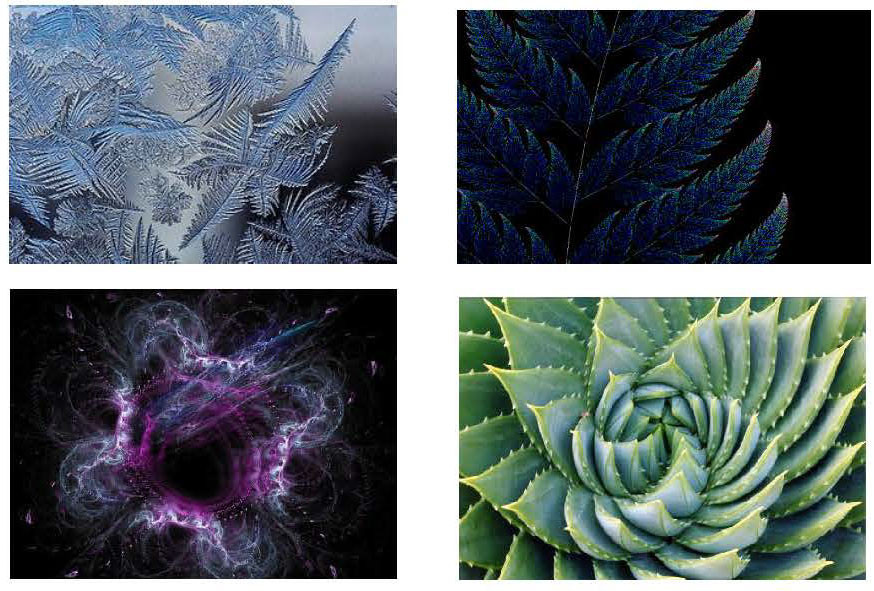
Clockwise from top left: Ice crystals, leaf formation, star formation, aloe vera leaves.
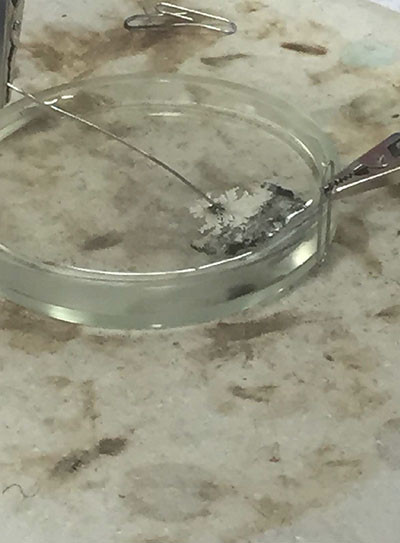
George and Keir’s silver fractals start to form.
*Click here* for a video short of their reaction in time lapse.
Two other student pairs’ time lapse videos are below.
*Connie and Minty*
*Luke and Hua
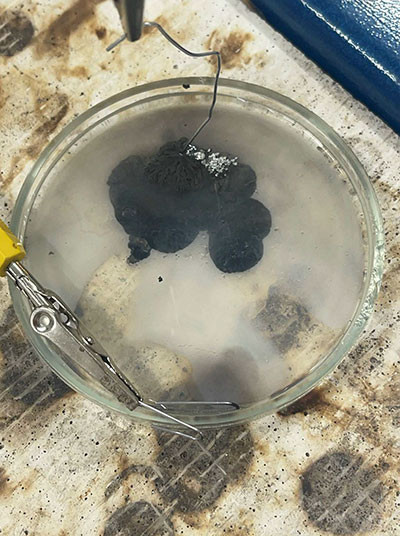
Dasara’s and Oumou’s silver fractals start to form after some initial oxidisation of the silver metal (this is the black substance)
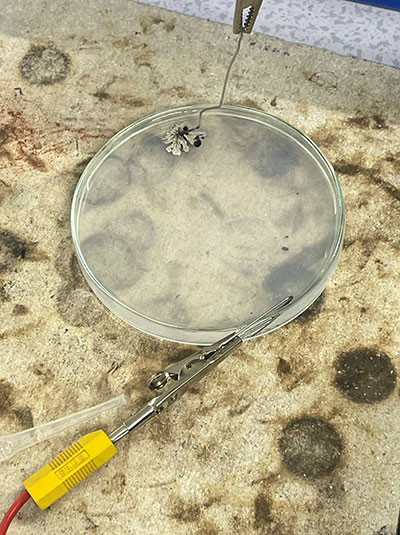
Dasara’s and Oumou’s silver fractals after adjusting the position of the paper clip. Much better!
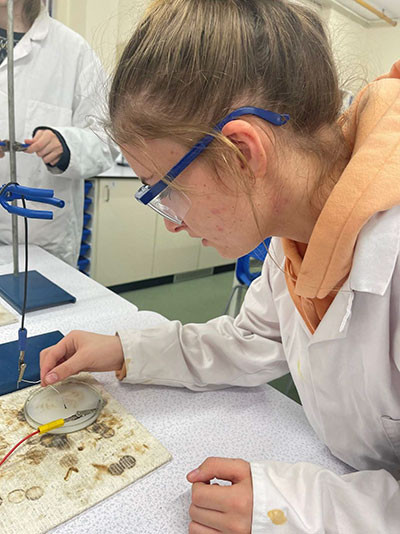
Dasara ensures that the paper clip just touches the surface of the ammoniacal silver nitrate in the petri dish. This enabled her and Oumou to produce the excellent silver fractals in the above picture.
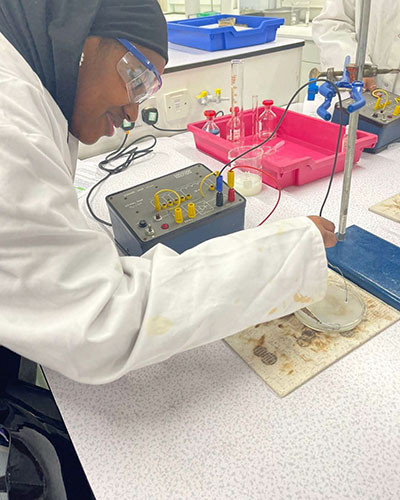
Oumou tweaks the position of the paper clip which is acting as the negative electrode in the electrolysis.
